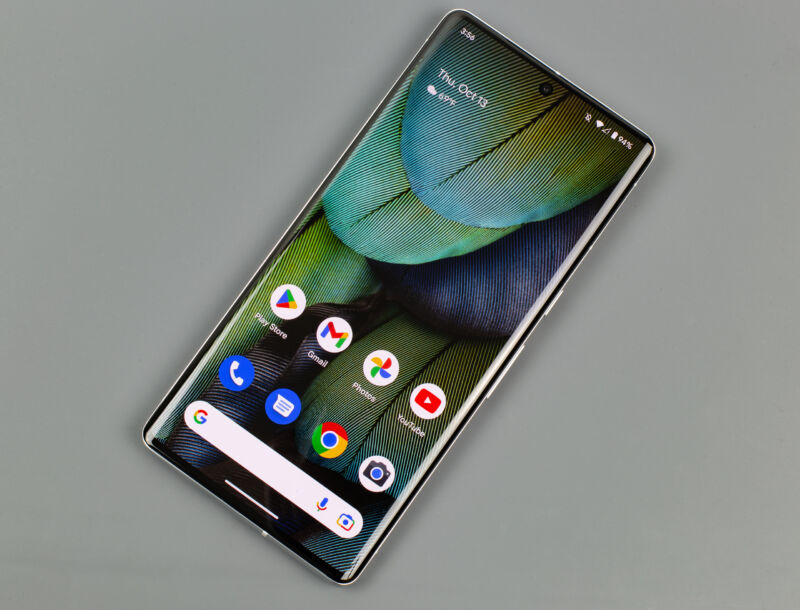
Enlarge (credit: Ron Amadeo)
The Pixel 7 might be Google's first-ever flagship smartphone sequel.
That might seem like a strange thing to say about "version 7" of a smartphone, but before now, every flagship Pixel has switched manufacturers or used an all-new design from year to year. This strategy is the exact opposite of the one used by the larger, more serious hardware companies like Apple or Samsung, from which you can expect steady, iterative smartphone designs, with big redesigns coming every few years. When you're scrambling to build a smartphone from scratch every year, it's hard to do much in the way of error correction, improvements, or adjusting to customer feedback.
The Pixel 6 Pro was already the best Android phone you could buy, so Google didn't have to do too much to turn in a good smartphone this year. All the important bits from the Pixel 6 are here, like the category-leading price tag, great camera, and speedy, clean software. But even with that solid base, Google did a good job of fixing some of our minor complaints about the Pixel 6. There's no reason to upgrade if you have a Pixel 6, but an actual "version 2" of Google's flagship smartphone might entice more people to try the brand.
Read 48 remaining paragraphs | Comments
from Tech – Ars Technica https://ift.tt/0vuL1V4
No comments:
Post a Comment